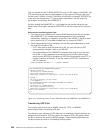
Table 24. Image Transfer Type for QSYS.LIB File System
Library
Exists File Exists
Member
Exists
Replace
Selected Result
Yes Yes Yes Yes Data written to member
Yes Yes Yes No Transfer rejected and message sent
Yes Yes No N/A Member created and data written to it
Yes No N/A N/A Data file created with record length equal to
512. Member created and data written to it.
No N/A N/A N/A Transfer rejected and message sent. Use the
QUOTE CRTL subcommand to create a library
on the remote AS/400 system.
AS/400 File Pre-Creation
We strongly recommend that you pre-create any files that are to be transferred to
the AS/400. This is the best method of ensuring that your data is transferred reliably
and effectively with optimal performance and integrity.
Be sure to allocate enough records to accommodate the entire file. On the AS/400
this is done in the SIZE parameter of the Create Physical File (CRTPF) command.
Ensure that the RCDLEN parameter of the Create Physical File (CRTPF) command
is adequate to accommodate the maximum record length expected.
In addition, if the user profile doing the transfer does not have *NOMAX specified
on the MAXSTG parameter, then the result of the calculation (MAXSTG - storage
allocated) must be a value at least twice the size of the file being transferred.
Note: You can pre-create files on the FTP server system using the QUOTE
subcommand. You can pre-create files on the FTP client system using the
SYSCMD subcommand.
Source Files: Sequencing, Timestamp, Level
When you use FTP to transfer data into a source physical file member, the member
is automatically resequenced. This automatic resequencing is the same as if you
specified Y to the resequencing prompt when exiting from the Start Source Entry
Utility display.
In addition, the date and time of the update operation, and the level identifier of the
member, but not the file, are updated. This happens automatically and cannot be
overridden.
In addition, the member type field is left blank, even if the transfer is from another
AS/400.
CCSID Code Page Tagging for New Files on the AS/400
When FTP creates a new file on an AS/400 system, the file is tagged with a CCSID
or the code page of that CCSID to identify the character data in that file. For “root,”
QOpenSys and QLANSrv, the file is always created new except when an append is
done. When appending data to an existing file, the tag of the file is not changed.
Table 25 on page 265 summarizes how FTP assigns these values for different file
systems and transfer types.
264 OS/400 TCP/IP Configuration and Reference V4R4


















